Christmas Across Native America
For the last few years, Native friends have shared their Christmas plans and traditions with the Smithsonian Voices blog. This year we have updated this story with new photographs and quotes.
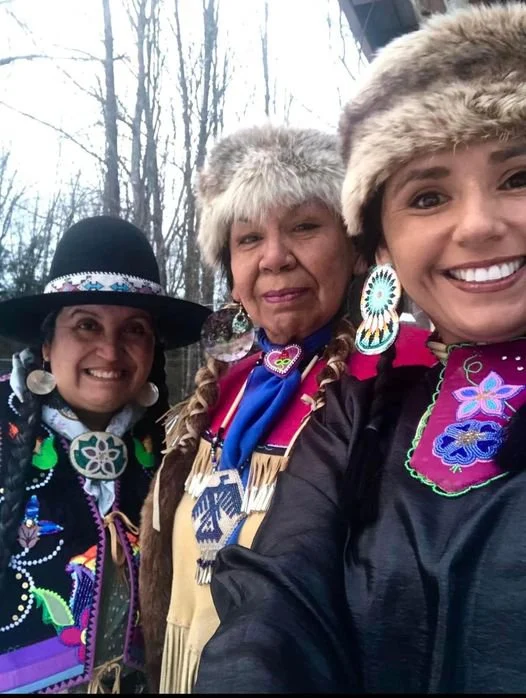
The introduction of Christianity to the Americas and the origins of Christmas can be controversial in Native circles. Europeans knowingly replaced Native people’s existing spiritual beliefs with the beliefs taught in the Bible. Cruelty and brutality often accompanied this indoctrination. Yet it is also true that some tribes, families, and individuals embraced the Bible and Jesus’ teachings voluntarily. This complicated history is reflected here.
All throughout Indian Country, Native people have gathered in churches, missions, and temples to celebrate the birth of Jesus Christ by singing carols and hymns in their Native languages. In some churches, the story of Jesus’ birth is recited in Native languages. Some Native churches also host nativity plays using Native settings and actors to re-enact the birth of Jesus Christ. Among Catholics, Christmas Eve Mass traditionally begins in Indian communities at midnight and extends into the early hours of Christmas Day. In tipis, hogans, and houses, Native American Church members also hold Christmas services, ceremonies that begin on Christmas Eve and go on all night until Christmas morning.
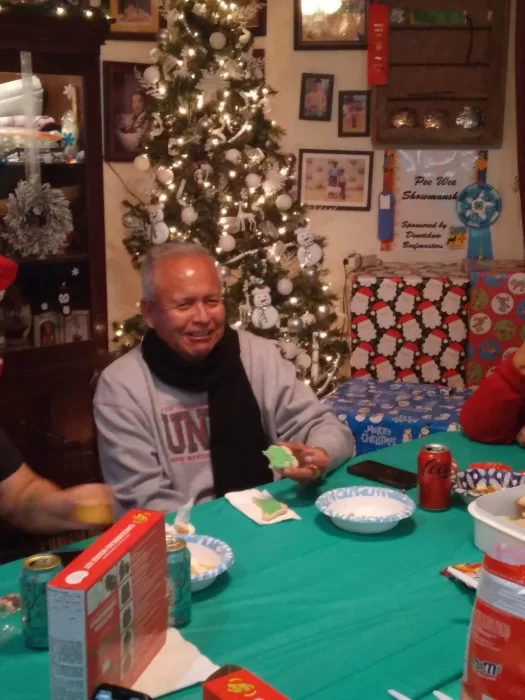
Music played an important part in converting Native people, establishing their practice of worship, and teaching them how to celebrate the Christmas season. Perhaps the earliest North American Christmas carol was written in the Wyandot language of the Huron-Wendat people. Jesous Ahatonhia (“Jesus, He is born”)—popularly known as Noël huron or the Huron Carol—is said by oral tradition to have been written in 1643 by the Jesuit priest Jean de Brébeuf.
In contemporary times, traditional powwow singing groups have rearranged Christmas songs to appeal to Native audiences. A humorous example is Warscout’s NDN 12 Days of Christmas, from their album Red Christmas. Native solo artists also perform Christmas classics in Native languages. Rhonda Head (Cree), for example, has recorded Oh Holy Night, and Jana Mashpee (Lumbee and Tuscarora) has recorded Winter Wonderland in Ojibwe.Native communities host traditional tribal dances, round dances, and powwows on Christmas Eve and Christmas Day. Among the Pueblo Indians of the Southwest special dances take place, such as buffalo, eagle, antelope, turtle, and harvest dances. The Eight Northern Pueblos of New Mexico perform Los Matachines—a special dance-drama mixing North African Moorish, Spanish, and Pueblo cultures—which takes place on Christmas Eve, along with a pine-torch procession.
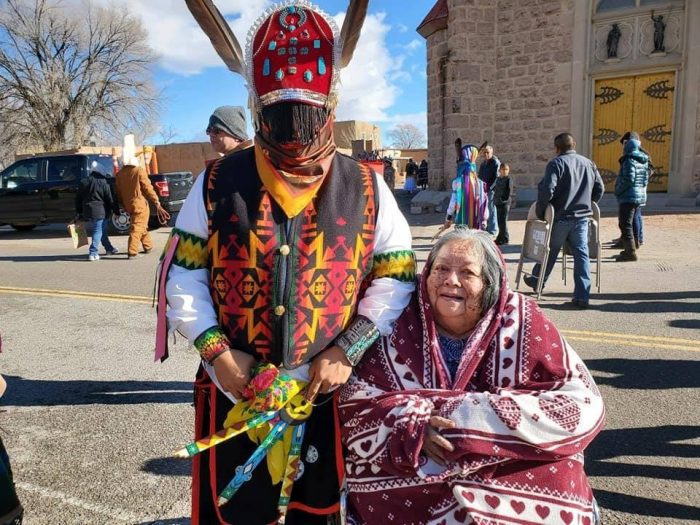
For Native artisans, this is traditionally the busy season as they prepare special Christmas gift items. Artists and craftspeople across the country create beadwork, woodwork, jewelry, clothing, basketry, pottery, sculpture, paintings, leatherwork, and feather work for special Christmas sales and art markets that are open to the public. For 17 years, the National Museum of the American Indian annually holds its Native Art Market in New York and Washington a few weeks before Christmas.
In many communities and homes, Christian customs are interwoven with Native culture as a means of expressing Christmas in a uniquely Native way. The importance of giving is a cultural tradition among most tribes. Even in times of famine and destitution, Native people have made sure their families, the old, and orphans were taken care of. This mindset prevails into the present. Gift-giving is appropriate whenever a tribal social or ceremonial gathering takes place.
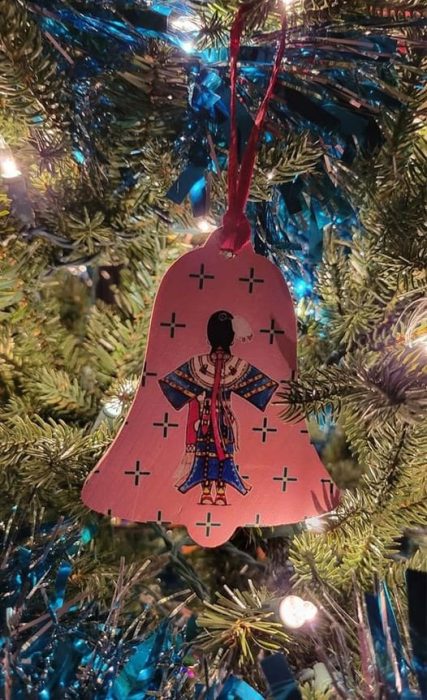
In the same way, traditional Native foods are prepared for this special occasion. Salmon, walleye, shellfish, moose, venison, elk, mutton, geese, duck, rabbit, wild rice, collards, squash, pine nuts, corn soup, red and green chile stews, bread pudding, pueblo bread, piki bread, bannock (fry bread), tortillas, berries, roots and Native teas are just a few of the things that come to mind. Individual tribes and Indian organizations sponsor Christmas dinners for their elders and communities prior to Christmas. Tribal service groups and warrior societies visit retirement homes and shelters to provide meals for their tribe members on Christmas Day.
Many tribes begin their Christmas meal by putting out a feast plate or spirit dish for loved ones who passed away. As a special Christmas day of feasting a prayer is rendered and food offerings are placed outside of the home on a plate or in the sacred fire for relatives who are no longer with us. The respect is that you allow your remembrances—those who have passed—to eat first. Many are experiencing their first Christmas without a loved one.
Alternatively, some Natives do not celebrate Christmas but use this seasonal opportunity to celebrate the Winter Solstice. Yet others in the Northern plains are honoring their relatives with a memorial horse ride called the Dakota 38 + 2. On December 26, 1862, at Fort Snelling, Minnesota, in Dakota County, 38 Dakota men were hung all at once. It is recorded as the largest mass execution in U S. history and how some Natives in Mni Sota and the Dakotas observe this time of the year. Each December 10, riders set out to traverse the 330 miles between Lower Brule, South Dakota, and conclude on December 26 in Mankato, Minnesota.
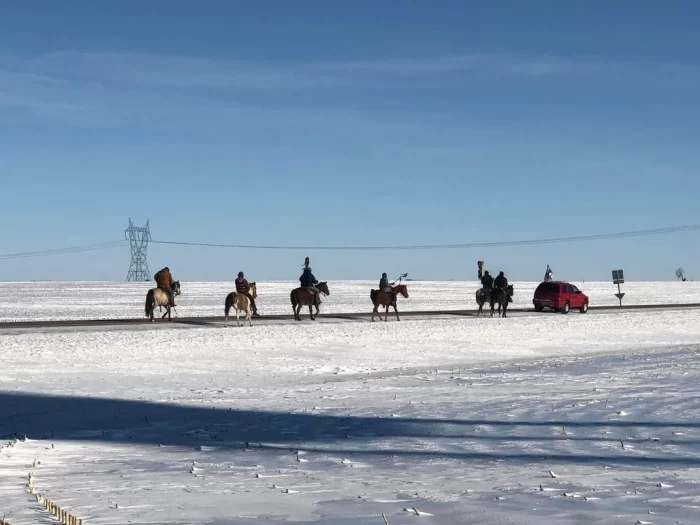
According to the Urban Indian Health Commission, nearly seven out of every ten American Indians and Alaska Natives—2.8 million people—live in or near cities, and that number is growing. During the Christmas holidays, many urban Natives travel back to their families, reservations, and communities to reconnect and reaffirm tribal bonds. They open presents and have big family meals like other American Christians.
This year we asked our Native friends “How important is Christmas to you?” Here are some of their answers preceded by the locations they were submitted from:
Nez Perce Reservation, Idaho – Back in the day, winter was our time for Medicine Dance. Our Medicine people were there to heal and have ceremony. Especially around Christmas time. It was a sacred time that was accepted by the Christians. But, they had no idea what we were doing. I myself, have attended many as a child. Nowadays it has changed. I guess I am getting old.
Ohkay Owingeh Pueblo, New Mexico – Not important at all. All things associated with the holiday like family gifts giving I do or try to do every day. Make time for any family share a meal give a gift just to do it. My thinking is these things should be done daily not waiting for so called holidays to do them. For me our Native dances that go in line with the seasons and times of the year hold more value than these other holidays.
Winnebago Treaty Land, Nebraska – In the years since I’ve become a grandmother, I find myself reflecting on the years gone by, when my kids were little or when I was young to reflect on the spirit of Christmas. My grandson stopped by to drop off my portfolio and it felt good to have some good presents to give him. I had little binoculars for him. He loved those. He’s a little hunter already.
Lebanon, New Hampshire – It is important for family time and family traditions. Most of my family don’t “do” church or organized religions any more though, so it’s more about family for them.
Shawnee, Oklahoma – It varies from year to year. This year will be the 10th anniversary of my father passing. He died on December 23, 2012. Many years ago, when I was a little tyke my dad played Santa for the church. I played Santa for our Indian Education program. So, there is such a thing as Indian Santa. My grandkids are teenagers now. Last year I was lying in the hospital hoping to survive Covid-19 and I did, so miracles happen this time of the year. But with all that said I have a melancholy feeling about Christmas.
Federal Way, Washington – Christmas is for the children! But traditions are hard to break. The Christians taught us these celebrations thru their colonizing ways. Many of our people still go to Christian church and celebrate. We are all going thru changes! Prayers and blessings to everyone during this time!
Maskoki Southeast Aboriginal Territory, North Carolina – First understanding Christmas is a by-product of religion, and a German man who became Santa; the war era and giving hope to the children. Personally, I look forward to the calming of the Winter Solstice season and all the culturally shared events. Yes, even Christmas…
Ft. Collins, Colorado – We celebrate the Winter Solstice and whoever was successful during our fall hunts gets the honor of providing the dinner roast for our celebratory meal. We also exchange gifts and use this time to reflect on the year and how blessed we are individually and as a family.
Ontario, Canada – Christmas is zero important to me. It’s a Catholic thing in all its entirety. A religion who forcibly severed our culture from ancestors. It’s a societal mind-%$#@.
Sawmill, Arizona – It’s about my kids and getting out of my own way so they can enjoy it. I haven’t cared about Xmas for most of my life. My dad said it’s a white man holiday and didn’t put much value into it. I adopted that idea but now just try to let my kids enjoy the time and although, teach them, let me be happy too. It’s a festive time of year.
Chicago, Illinois – We stopped with all the madness of shopping, house decorated perfectly, Planning big specialty dinners. I had a few friends that lived traditionally as possible, and never celebrated the Christian holidays. I do believe in a higher power, prayers daily, but I’m less stressed about the big event. We do like ham and it’s on sale, so we will just have a good dinner, and relax. I don’t even bother will decorations anymore.
Mount Airy, Maryland – As a Christian, I celebrate Christmas as the time Jesus was born, John 3:16. But I do believe the holiday has become over commercialized. I also believe in Maheo and Sweet Medicine – the Cheyenne way.
Dennis W. Zotigh (Kiowa/Ohkay Owingeh Pueblo/Isante Dakota Indian) is a member of the Kiowa Gourd Clan and San Juan Pueblo Winter Clan and a descendant of Sitting Bear and No Retreat, both principal war chiefs of the Kiowas. Dennis works as a writer and cultural specialist at the Smithsonian’s National Museum of the American Indian in Washington, D.C.
This article was originally published by the Smithsonian magazine blog, Smithsonian Voices.Copyright 2022 Smithsonian Institution. Reprinted with permission from Smithsonian Enterprises. All rights reserved. Reproduction in any medium is strictly prohibited without permission from Smithsonian Institution.
Posted: 22 December 2022
-
Categories:
American Indian Museum , Education, Access & Outreach , Feature Stories , History and Culture







